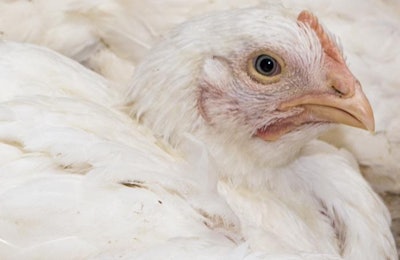
Sanderson Farms, in a notice filed with the U.S. Securities and Exchange Commission (SEC), advised shareholders that they could expect a proposal to eliminate the use of medically important antibiotics from the company’s supply chain, and recommended that shareholders vote against it.
The third largest poultry company in the United States announced in the filing that the annual stockholders meeting would be held on February 15, and that the company had been notified that shareholder As You Sow and other co-proponents are requesting that Sanderson Farms adopt a company-wide policy to phase out such antibiotics for disease prevention purposes.
The proponents of the measure stated that they believe Sanderson Farms is losing out on market share to companies that have stronger antibiotic-use policies in place. They further assert that consumers are increasingly concerned about injudicious antibiotic use, and that restaurant chains are making supply chain changes in response to those concerns.
Board says phasing out antibiotics would be a bad move
In the filing, Sanderson Farms described the proposal to cut medically important antibiotics as “substantially the same proposal submitted by the same lead proponent at our last annual meeting.”
The company’s board thought eliminating the use of antibiotics was a bad idea then, and now.
“We believe this change would harm our customers, consumers, the environment, the communities in which we operate, the animals we raise, our company and our stockholders,” the board stated in the filing.
The company further stated that its customers are not demanding chicken raised without antibiotics, and that there is actually an oversupply of antibiotic-free (ABF) chicken products.
“Industry data indicate that the supply of ABF chicken is currently significantly greater than demand for the product, and that oversupply has increased. ABF consumers primarily seek boneless breast meat and chicken tenders, so the other parts of the ABF chicken (wings and the dark meat) are sold into conventional markets. As a result, while ABF chickens represented an average of 40.5 percent of all U.S. fresh chicken production for the first ten months of 2017, only 6.4 percent of total U.S. fresh chicken sales were attributable to product marketed and sold as ABF. This means that only 15.8 percent of all ABF chicken produced was actually marketed and sold as ABF, and that 84.2 percent was sold as conventionally raised chicken at conventional prices, despite being more expensive to produce,” the company stated.
“These supply and demand dynamics have worsened compared to last year. For the same period of 2016, an average of 26.4 percent of all ABF chicken was sold as ABF. Thus, while ABF production is significantly increasing (from 20.5 percent of total production in October 2016 to 42.1 percent in October 2017), demand for the product is not keeping pace with supply.”
Comprehensive resource for antibiotic-free poultry production available
A new collection of exclusive articles, blogs, infographics and videos on antibiotic-free poultry production, by trusted WATT Global Media editors and industry experts, equip poultry producers and marketers with information to help them make critical business decisions. Purchase your copy.

















